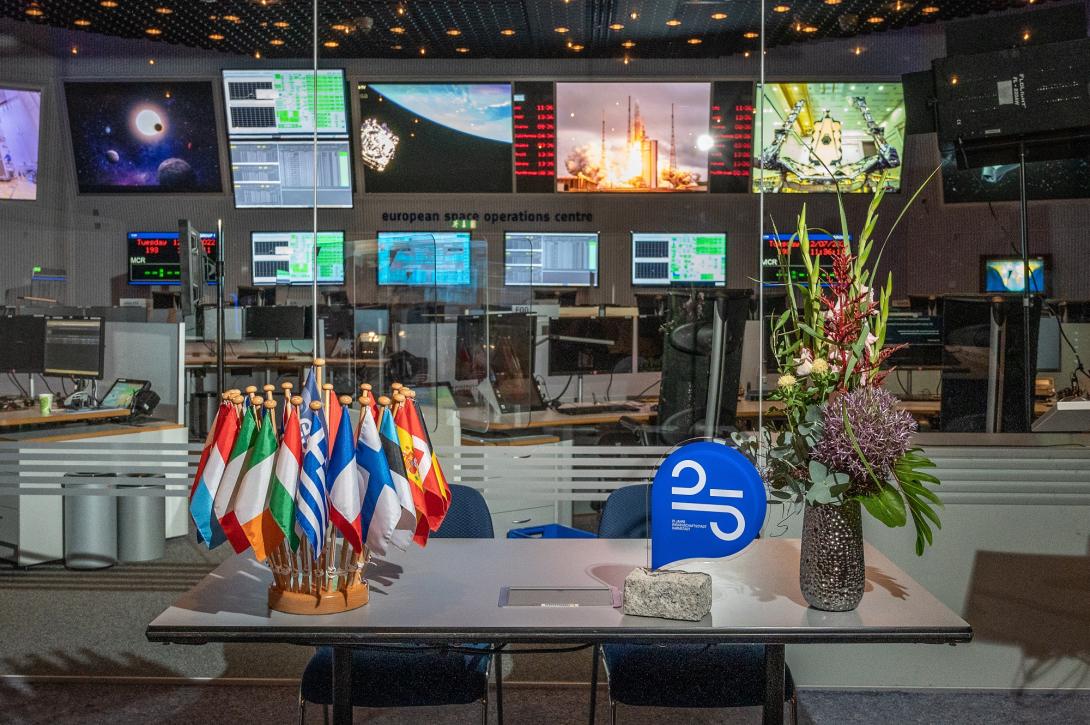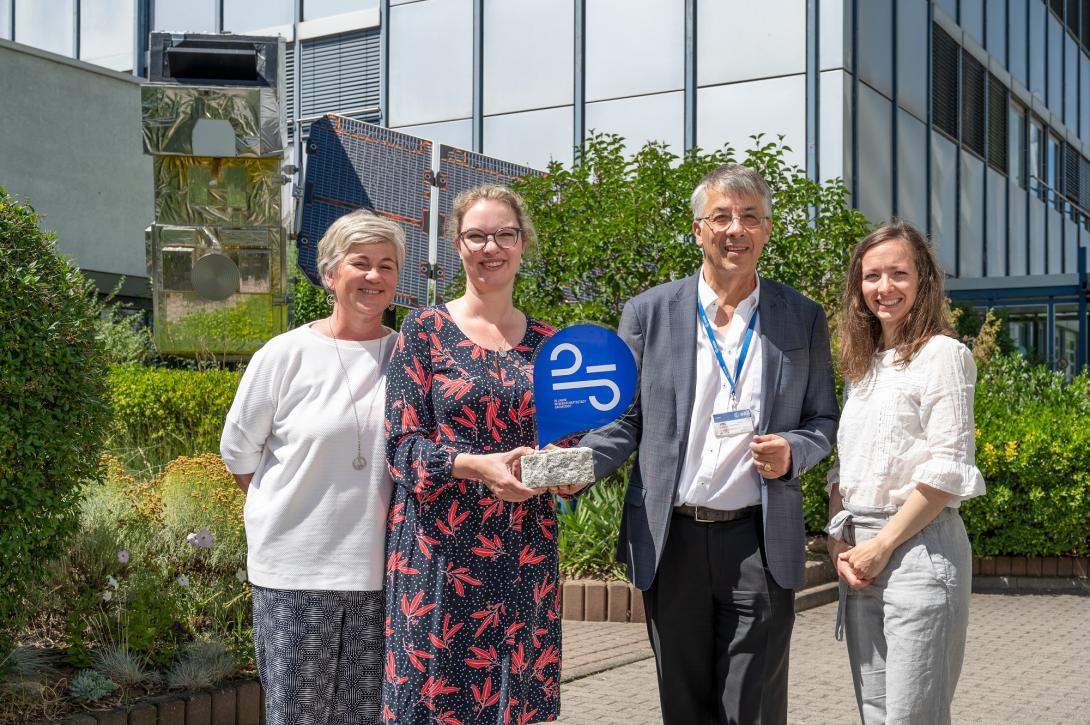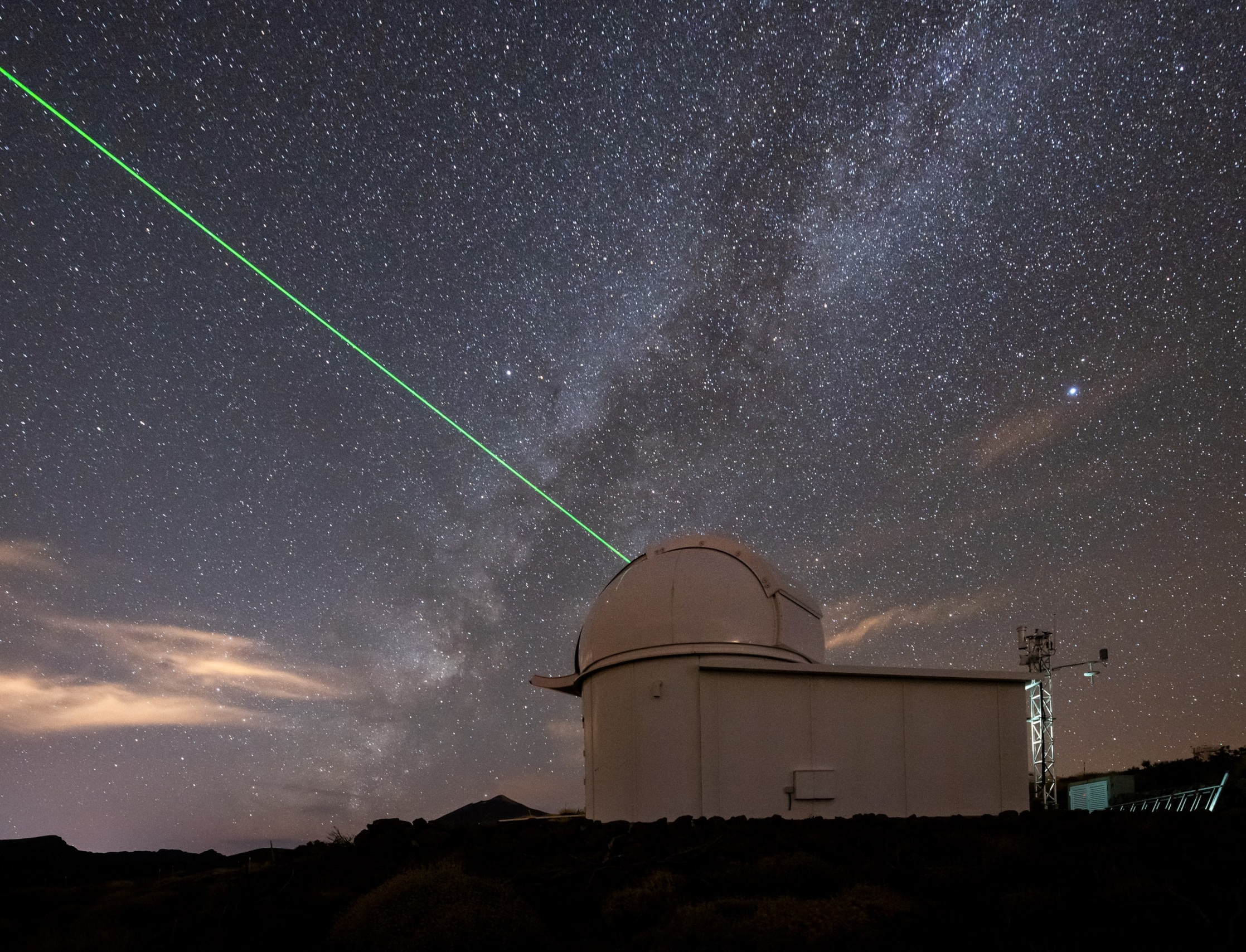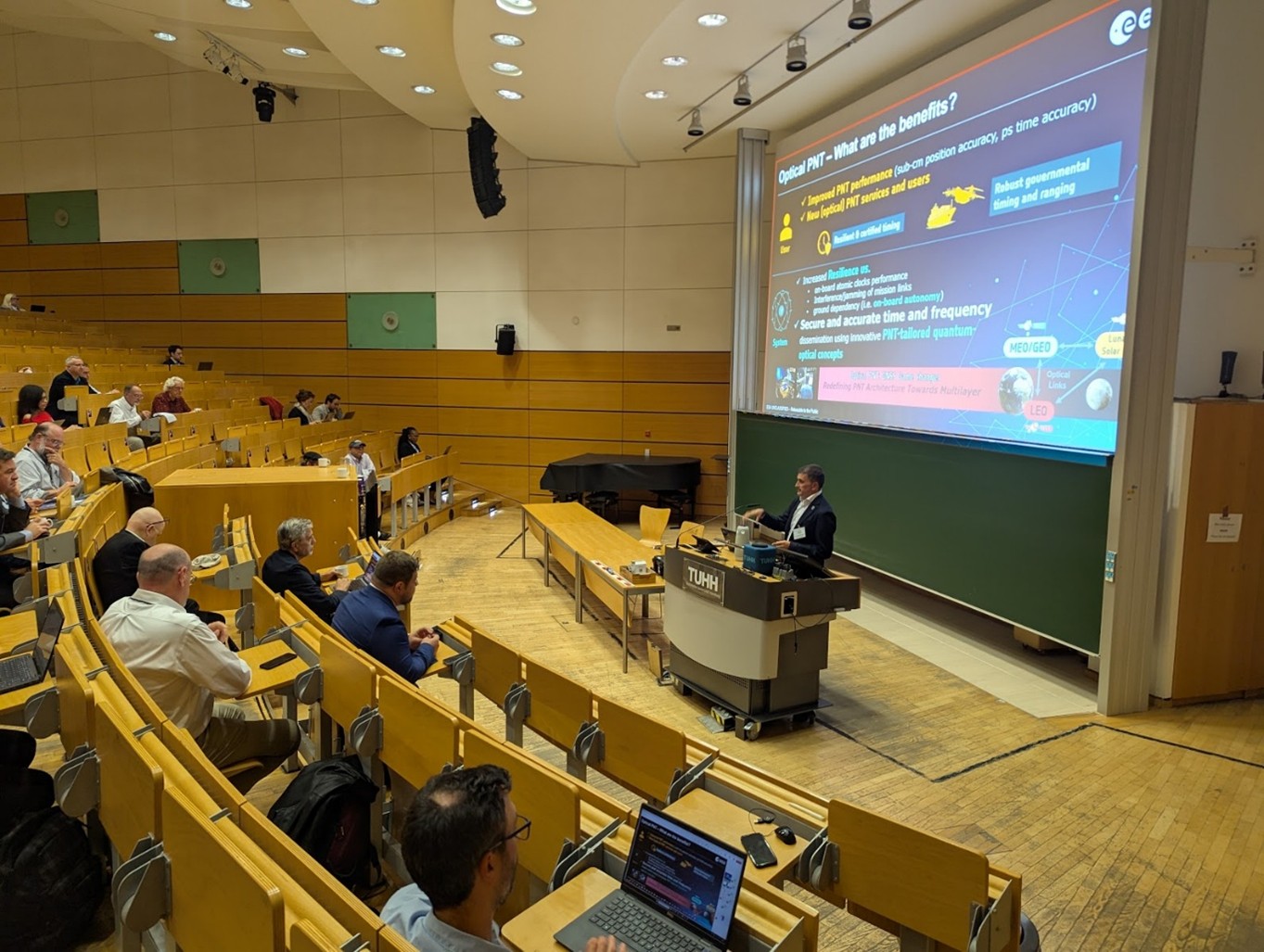Science celebration arrives at Europe’s gateway to space
To celebrate the 25th anniversary of Darmstadt as a “City of Science”, the German city’s wide range of scientific institutions are opening their doors to spread awareness of the city’s scientific heritage and inspire visitors.
The celebratory "Wissenspunkt" (Knowledge Point) set off on its tour of the city on 13 June. Now, it has arrived at ESA’s ESOC mission operations centre – Europe’s gateway to space and Centre of Excellence for Satellite Operations. To celebrate this milestone, ESOC is offering an exclusive insight into its activities, achievements and history on four special Saturday tours over the coming weeks.

Credit: ESA / J. Mai
25 years at ESA’s ESOC mission control
So, what has happened at ESOC in the 25 years since its host city was named a City of Science? In the last quarter century, ESOC has flown ESA’s first deep-space missions to Mars and Venus, new space observatories that have helped European researchers answer fundamental scientific questions about our place in the Universe, and the first satellites in the EU’s ambitious Copernicus Earth observation programme that are helping us study our changing planet in greater detail than ever before.
Our teams have reached out to mysterious worlds even further away – further than ever before – landing the first probe on Saturn’s largest moon, Titan, and conducting humankind’s first ever rendezvous and landing on a comet.
These missions would not have been possible without the work led by ESOC back on Earth. In the last 25 years, our teams have developed powerful customisable mission control software that has supported pioneering ESA missions to new frontiers and which has been made freely available to other European entities – boosting the competitiveness of European companies in the rapidly expanding international space sector.
The last two decades also saw ESA establish the first three deep-space ground stations in its global Estrack network. These giant 35-metre antennas, remotely controlled from ESOC, bridge the vastness of space between mission control and the far reaches of the Solar System and allow our operators to exchange commands and receive vital telemetry and science data with spacecraft almost anywhere. Estrack has since become a key strategic asset for ESA and a cornerstone of its international collaboration with other space agencies such as NASA and JAXA.
More recently, ESOC has become the home of ESA’s growing Space Safety programme – a dedicated effort to protect Earth, its inhabitants and its infrastructure in space and on the ground from hazards that originate in space, such as space debris, space weather and asteroids.
We look forward to seeing what the next 25 years will bring at our site in Darmstadt, City of Science.

Credit: ESA / J. Mai



